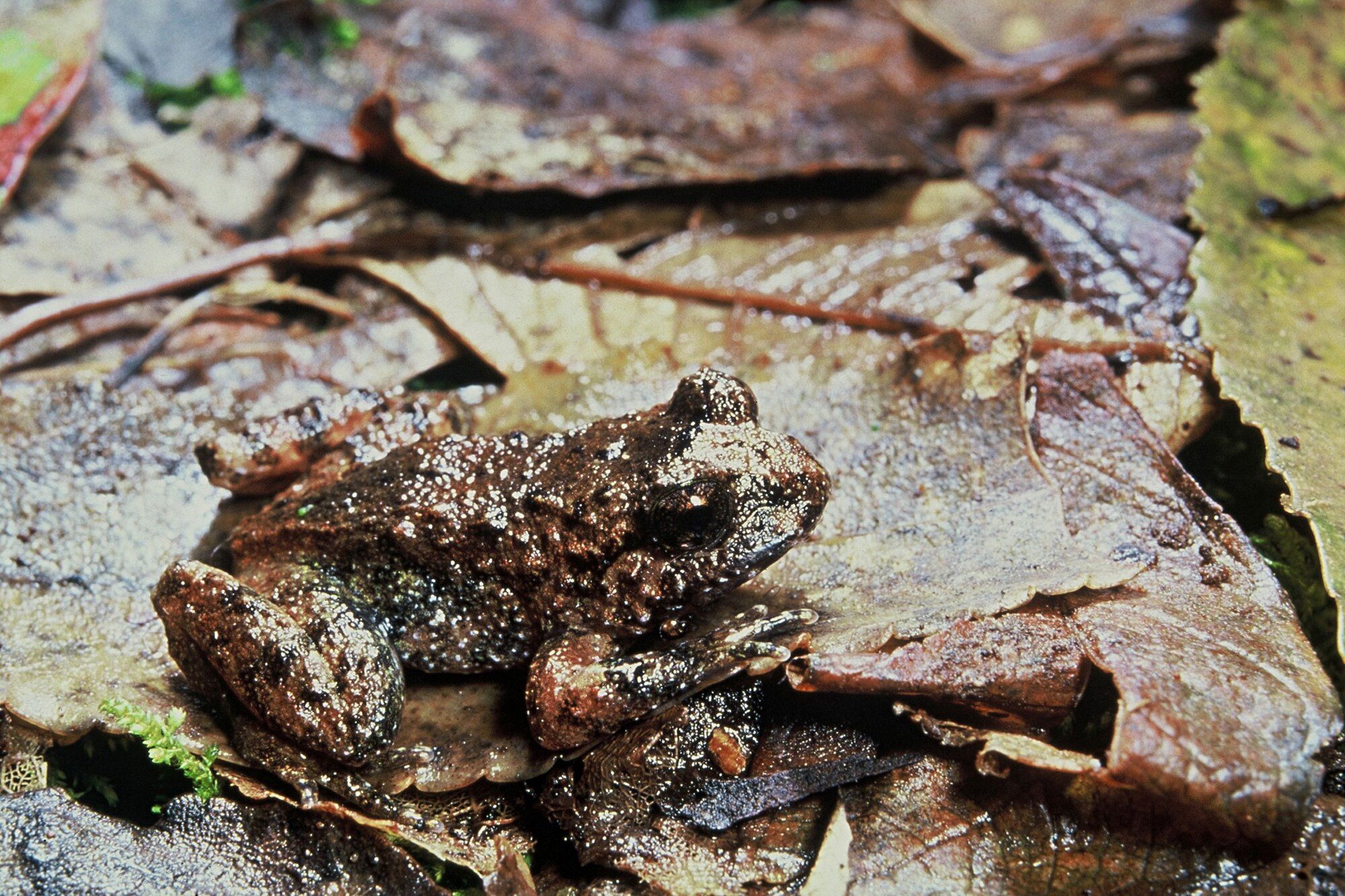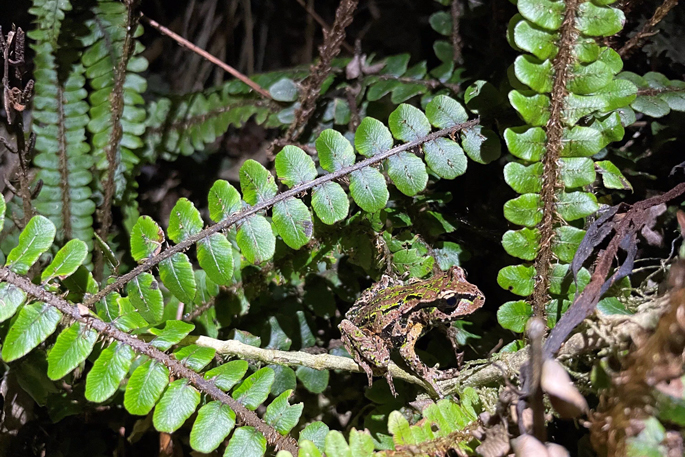New Zealand’s Archey’s frog population is higher than previously estimated, but the species remains at risk, according to a new conservation status report.
An independent panel of experts assessed all 20 frog species and sub-species in New Zealand, as well as one newt. Four species have declined in status, while none have improved.
Hamilton’s ffrogs and one subspecies of Hochstetter’s frog face serious threats, the Department of Conservation’s (DoC) lead on the assessment panel Dr Rhys Burns said.
In contrast, Archey’s frogs have higher numbers than previously thought but continue to decline, he said.
“The current Archey’s adult frog population, previously estimated as between 5000 and 20,000, has been revised to over 100,000 individuals,” said Burns.
“Surveys of Archey’s frog in central-southern Coromandel and Whareorino (western King Country) over the past few years have identified higher numbers than previously known.
“However, their conservation status remains At Risk – Declining, primarily due to predation by rats and mice.”
The cause of the decline is unclear, but possible factors include climate change, predation by mice and weka, poisoning from brodifacoum operations in 2014 and 2019, or a recently discovered frog fungus.
Burns said DoC will consider all these factors when planning future frog management on Te Pākeka.
Climate change has been added to the assessment for the first time, acknowledging the increasing pressures on frog populations.
“Changes in rainfall and temperature dry the forest understorey where land-based frogs such as Archey’s and Hamilton’s live,” said Burns.

Hochstetter's frog. Photo / DOC
In January 2023, a severe storm caused a major slip in Otawa, near Te Puke, destroying the habitat of the “Otawa” Hochstetter’s frogs, leading to an estimated 30-40% population loss in one night.
Burns said surveying frogs is challenging but vital.
“The more high-quality information we have, the better we can protect these taonga species. Our frogs are unique to New Zealand, so if they go from here, they’re gone from everywhere.”



0 comments
Leave a Comment
You must be logged in to make a comment.